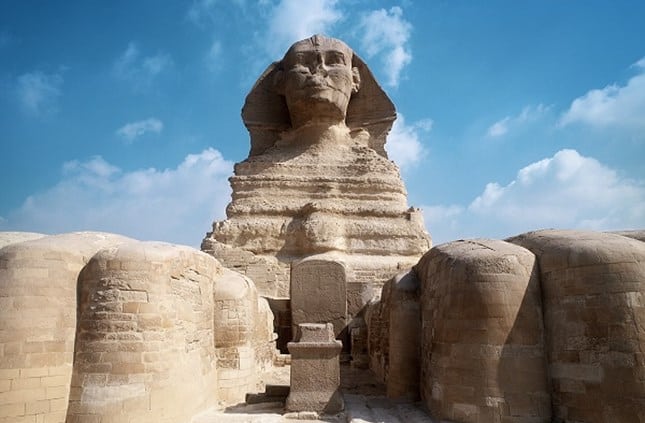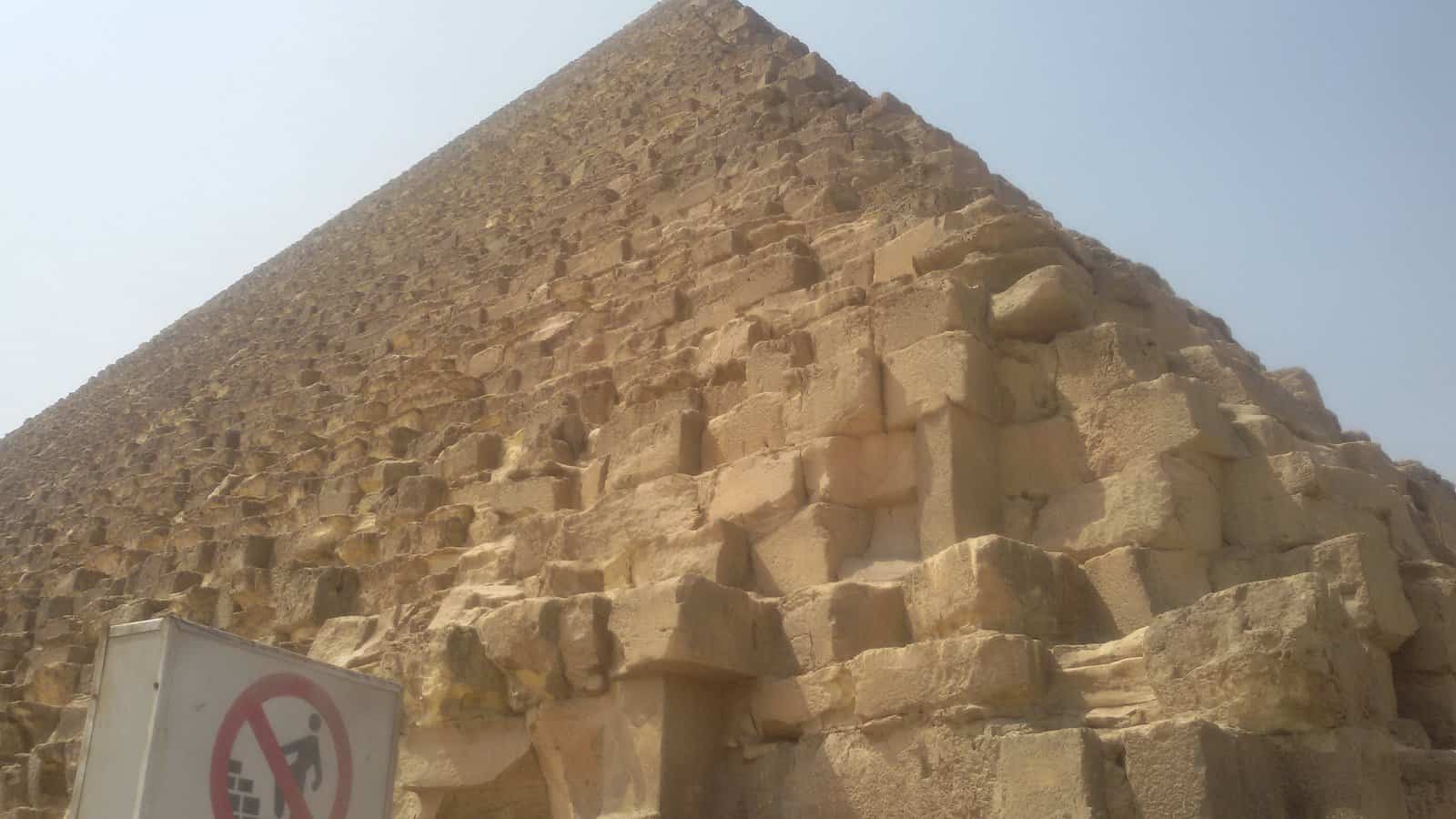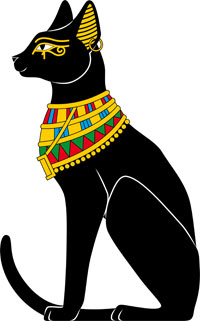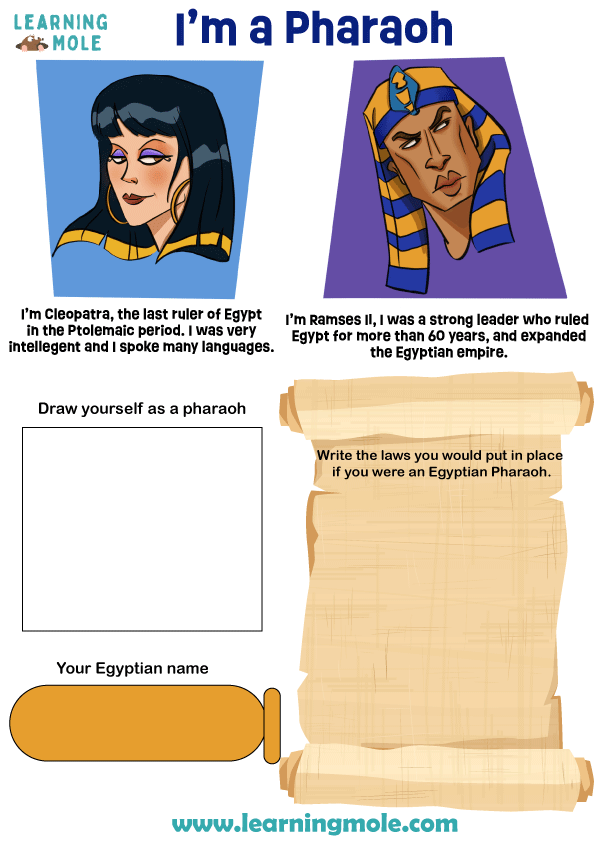
5 Amazing Facts about Ancient Egypt for Kids
Egyptian Pyramid Adventure – Ancient Egypt KS2 – Ancient Egypt Facts for Kids -Egypt facts for kids
Ancient Egypt Facts
The fourth-dynasty king, Sneferu 2686 – 2667 BC, was the first to create the pyramid shape that we all recognize and associate with Egyptian architecture.

Things You May Not Know About Ancient Egypt
The fourth-dynasty king, Sneferu 2686 – 2667 BC, was the first to create the pyramid shape that we all recognize and associate with Ancient Egyptian architecture. He built three pyramids in all—but the first two were glorious failures.
His first, the pyramid at Medium, began as a step pyramid and was then modified to form the first true pyramid. But it was unstable and the limestone blocks began to slip. Soon, work on it was abandoned.
King Sneferu then moved to Dahshur and built a second pyramid, which we now know as the “Bent Pyramid” because its upper part rises at a shallower angle of incline than the lower part.
The Bent Pyramid was originally planned as a true pyramid,
But the corners were built on unstable ground, and the walls of the burial chambers inside began to crack and shift inward. Of necessity, the building’s geometry was altered at a point just above half its height.
This was probably done to alleviate the stresses in the lower part of the pyramid and make it stronger. But the bent pyramid was never used. Instead, Sneferu began the third pyramid about a mile away.
This one is called the red pyramid because of the red limestone blocks used in its construction. It became the world’s first successful true pyramid.
The Pyramids of Giza
With the red pyramid, Sneferu set the standard for all true pyramids to come. He included above-ground burial chambers, a mortuary temple, and a causeway leading down to a valley temple. This was the model followed by his son,

Khufu, built the first and largest pyramid at Giza. The Giza pyramids were erected on a rocky plateau on the west bank of the Nile in northern
Egypt and were connected, by covered causeways, to mortuary temples in the valley below the plateau. These temples had landing stages that were linked to the Nile by a canal. In ancient times, they were included among the Seven Wonders of the World.
Khufu – 2575-2566 BC
The largest of the three pyramids at Giza, known as the Great Pyramid, is truly an astonishing work of engineering. It was built over a twenty-year period. Some believe that it was built by slaves, but this is not true.
One hundred thousand people worked on the great structure for three months of each year, during the Nile’s annual flood, when it was impossible to farm the land and most of the population was unemployed.
The pharaoh provided good food and clothing for his workers and was kindly remembered in folk tales for many centuries.
The sides are oriented to the four cardinal points of the compass, and the length of each side at the base is 755 feet (230.4 m). The faces rise at an angle of 51º 52’ and their original height was 481 feet (147 m). (They currently rise 451 feet [138 m].) .
It was constructed using around 2,300,000 limestone blocks, each weighing an average of 2.5 tons. Some blocks weigh as much as 16 tons. For centuries, the Great Pyramid was encased in smooth limestone, but this was plundered in our era to build Cairo.
Khafre 2558–2532 BC
Khufu’s son, Khafre (also known as Chephren). His pyramid, on a nearby site at Giza, appears taller than his father’s, but this is an illusion; it is built on higher ground.
Khafre’s pyramid retains some of its original limestone casing at the apex, and so it is possible to imagine how the pyramids might have appeared in antiquity.
Khafre also built the Great Sphinx, which is 66 feet high (20 m) and 240 feet long (73 m) and is part of Khafre’s pyramid complex. It represents Ra-Harakhte, the sun god,
As he rises in the east at dawn, the face of the Sphinx is a portrait of Khafra himself and is contemporary with his pyramid. It was carved from an outcropping of limestone left after quarrying the stone for his father’s pyramid.
Menkaura 2532-2503 BC
Khafre’s son, Menkaura built the third pyramid at the Giza necropolis (cemetery). With an original height of 228 feet (70 m), it is less than half the height of the pyramid built by his grandfather, Khufu.

The lower layers consist of red granite from Aswan, and the upper courses were originally made of gleaming white limestone.
Pyramid List
Although pyramid-building in stone continued until the end of the Old Kingdom, the pyramids of Giza were never surpassed in their size and the technical excellence of their construction.
In the New Kingdom, Ancient Egyptians marveled at their predecessors’ monuments, which were then well over a thousand-year-old.
Pyramids were built during the Middle Kingdom (2055-1650 BC) but these consisted of a mud-brick core with stone skin and are now mere piles of rubble.
There are over 100 recorded pyramids in Egypt, most of which belong to minor royalty or have no known owners.
They required an enormous investment in resources and stood out in the landscape as easy prey to the robbers. The last royal pyramid was built by the first king of the 18th dynasty Ahmose 1550-1525 BC but, after that, the Ancient Egyptians ceased building these majestic burial structures for all time.
Amazing facts about Ancient Egypt
- Cleopatra was not Egyptian.
Along with King Tut, perhaps no figure is more famously associated with ancient Egypt than Cleopatra VII.

Along with King Tut, perhaps no figure is more famously associated with ancient Egypt than Cleopatra VII. But while she was born in Alexandria, Cleopatra was actually part of a long line of Greek Macedonians originally descended from Ptolemy I, one of Alexander the Great’s most trusted lieutenants. The Ptolemaic Dynasty ruled Egypt from 323 to 30 B.C., and most of its leaders remained largely Greek in their culture and sensibilities. In fact, Cleopatra was famous for being one of the first members of the Ptolemaic dynasty to actually speak the Egyptian language.
After a long day’s work along the Nile River, Ancient Egyptians often relaxed by playing board games. Several games were played, including “Mehen” and “Dogs and Jackals,” but perhaps the most popular was a game of chance known as “Senet.” This pastime dates back as far as 3500 B.C. and was played on a longboard painted with 30 squares. Each player had a set of pieces that were moved along the board according to rolls of dice or the throwing sticks. Historians still debate Senet’s exact rules, but there is little doubt of the game’s popularity. Paintings depict Queen Nefertari playing Senet, and pharaohs like Tutankhamen even had game boards buried with them in their tombs.
Even though they regarded the pharaoh as a kind of living god, Ancient Egyptian workers were not afraid to protest for better working conditions.

Even though they regarded the pharaoh as a kind of living god, Egyptian workers were not afraid to protest for better working conditions. The most famous example came in the 12th century B.C. during the reign of the New Kingdom pharaoh Ramses III. When laborers engaged in building the royal necropolis at Deir el-Medina did not receive their usual payment of grain, they organized one of the first recorded strikes in history.
The protest took the form of a sit-in:
The workers simply entered nearby mortuary temples and refused to leave until their grievances were heard. The gamble worked, and the laborers were eventually given their overdue rations.
Surprisingly little is known about the life of the boy pharaoh Tutankhamen, but some historians believe they know how he died. Scans of the young king’s body show that he was embalmed without his heart or his chest wall.
This drastic departure from traditional Egyptian burial practice suggests that he may have suffered a horrific injury prior to his death. According to a handful of Egyptologists, one of the most likely causes for this wound would have been a bite from a hippopotamus.
Evidence indicates that the Ancient Egyptians hunted the beasts for sport, and statues found in King Tut’s tomb even depict him in the act of throwing a harpoon. If the boy pharaoh was indeed fond of stalking dangerous game, then his death might have been the result of a hunt gone wrong.
An ancient physician was usually a jack-of-all-trades, but evidence shows that Ancient Egyptian doctors sometimes focused on healing only one part of the human body. This early form of medical specialization was first noted in 450 B.C. by the traveler and historian Herodotus. Discussing Ancient Egyptian medicine, he wrote, “Each physician is a healer of one disease and no more…some eye, some teeth, some of what pertains to the belly.” These specialists even had specific names.
The Egyptians saw animals as incarnations of the gods

The Egyptians saw animals as incarnations of the gods and were one of the first civilizations to keep household pets. Egyptians were particularly fond of cats, which were associated with the goddess Bastet, but they also had a reverence for hawks, ibises, dogs, lions, and baboons. Many of these animals held a special place in the Egyptian home, and they were often mummified and buried with their owners after they died. Other creatures were specially trained to work as a helper.
Explore the previous examples and facts, and you will find yourself getting the necessary knowledge and information to fully grasp Ancient Egyptians. So, keep on visiting our Learning Mole to get more knowledge and information about all different kinds of stuff.
Why not subscribe to our LearningMole Library for as little as £1.99 per month to access over 1000 fun educational videos.



Leave a Reply